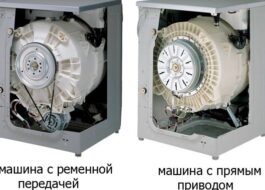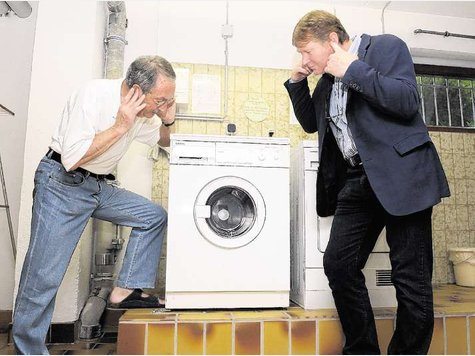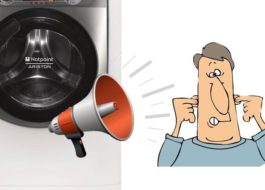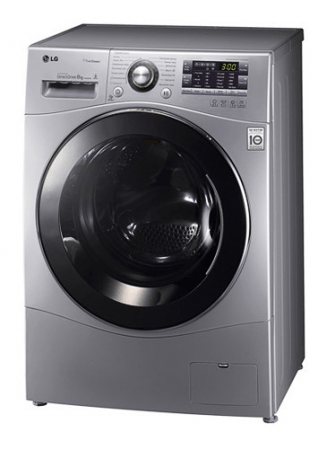Why is the washing machine noisy?
 The normal noise level for washing machines is indicated in the documents supplied with them. For belt-driven household appliances, it ranges from 60 to 72 decibels. For equipment with direct drive from 52 to 70 decibels. Yes, this is quite audible volume. She is relatively strong, but not too strong. If the machine begins to make a very loud noise, then most likely there is some kind of breakdown.
The normal noise level for washing machines is indicated in the documents supplied with them. For belt-driven household appliances, it ranges from 60 to 72 decibels. For equipment with direct drive from 52 to 70 decibels. Yes, this is quite audible volume. She is relatively strong, but not too strong. If the machine begins to make a very loud noise, then most likely there is some kind of breakdown.
Why does the washing machine make a lot of noise?
As mentioned above, the loud noise of the machine often tells us that it has become faulty. This may also be due to improper use of these household appliances. If your new washing machine makes too loud noises when you first start it, we advise you to stop washing and read the included instructions. Perhaps you did something wrong.
What else could be causing the noise?
- You may have forgotten to unscrew the shipping bolts. This kind of trouble usually happens to those who install the machine for the first time and do it without proper experience and instructions. Shipping bolts are needed to secure the drum during transport. They are located on the back of the case. Before starting the machine, you need to remove them and plug the holes with plugs. Plastic plugs are included with the washing machine.
- It is also possible that the washing machine is not installed correctly. Her legs are not adjusted. In this case, it may wobble during operation. To solve this problem you need to adjust them. The legs are adjusted by twisting them in one direction or another.
- Also make sure that the floor under your appliances is level and solid.
The washing machine recently started making noise.
If the machine worked well before, but suddenly began to make noise at different stages of washing, then most likely this is one of the malfunctions. Let's look at the possible reasons and how they manifest themselves:
- There is a possibility that cracks have appeared on the body where the machine’s legs or shock absorbers are located.
- The drum pulley has become loose. In this case, it is necessary to remove the rear housing cover and tighten the pulley retaining element.
- There may also be play in the engine or the bolts that secure it may have become loose. In the case of bolts, you can simply tighten them tighter.
- The shock absorbers could also fail. They can be purchased at a service center and replaced. Or call a trowel. And he will do it for you.
- Cracks could appear on the tank of the machine. In this case, it is necessary to replace the tank. Doing this on your own is not easy. And for those who don’t like to work a lot and delve into household appliances, in this case there is only one piece of advice - call the specialists.
- The springs that hold the tank on top could also break. The springs can be changed.
- The bolts that hold the counterweights could become loose. You can tighten them by burning them this way.
Loud noise
 If the noise during washing is not particularly strong. But when the machine starts spinning, you notice that the washing machine begins to make a lot of noise and rattle, then most likely the reason is a faulty bearing. To make sure that this is the problem, you need to turn off the machine. Then take out all the laundry and try turning the drum by hand several times. If there is no noise, then they are working properly.And if you hear a quiet knocking or rumbling noise, then it is likely that the bearings are actually faulty. It is also worth checking the drum for play. This can be done like this:
If the noise during washing is not particularly strong. But when the machine starts spinning, you notice that the washing machine begins to make a lot of noise and rattle, then most likely the reason is a faulty bearing. To make sure that this is the problem, you need to turn off the machine. Then take out all the laundry and try turning the drum by hand several times. If there is no noise, then they are working properly.And if you hear a quiet knocking or rumbling noise, then it is likely that the bearings are actually faulty. It is also worth checking the drum for play. This can be done like this:
- First turn off the washing machine.
- Place your hands on the drum. One on top. Another one from below.
- Try pushing it down and up.
If the bearings are seriously worn, you will notice half to a full centimeter of play. With this breakdown, the loudest noise occurs precisely when the machine begins to spin. This is explained by the fact that it is at this moment that the greatest load on the damaged part occurs.
Replacing bearings
In order to independently repair a washing machine with such a breakdown, you need to almost completely disassemble it. We will need:
- Remove the front wall. To do this, you will need to remove the cuff, unscrew the locking screws, remove the bottom panel and the control panel on top.
- Remove the back wall. Usually it can be removed very simply, you just need to unscrew the fixing screws.
- Remove the heating element and remove the engine. Before removing the engine, you need to remove the belt.
- Disconnect the tank. It is mounted on springs and shock absorbers.
- Disassemble the tank. Typically the tank consists of two halves, which are secured with bolts. There are also solid tanks. It is officially believed that solid tanks cannot be disassembled and then reassembled. But some craftsmen cut them with a hacksaw. And then they are assembled using self-tapping screws or bolts and waterproof sealant.
- Knock out the old bearings and replace them with new ones.
- Assemble the machine.
This is a really big amount of work. And we recommend that you think carefully before attempting it yourself.If you are not ready for long and difficult work, then simply turn to professionals.
If you are ready to take on it yourself, then the video that we have posted below will help you. In this video you will see the entire process of disassembling the machine and replacing bearings. Unfortunately, we could not find the video in Russian. But even by simply repeating all the steps of an English master, you can replace the bearings yourself. Watch the video:
In addition to the malfunctions described above, others may also be the cause. For example, the drain pump may be noisy. This usually happens when a foreign body gets into it or its bushings are severely worn out.
If the machine does not always make loud sounds, then there is a possibility that there is some object between the tank and the drum. Usually, with this problem, you can hear a loud sound resembling a cracking sound. It can occur at different stages of washing.
This video will tell you what to do in case of this malfunction:
The washing machine started squeaking
If there is a creaking or whistling sound while the machine spins, and you begin to notice rubber crumbs on the door sealing collar, then the cause of this noise is the friction of the cuff and the drum.
There is a somewhat risky way to remove such a malfunction. You can fix a piece of sandpaper on the side of the washing machine drum. You can use tape to secure it. Sandpaper should have a fine or medium grain size.
After this, start the machine for push-ups. As the drum rotates, the sandpaper will sand down the rubber seal in the places where the tank contacts it.Then you need to remove the sandpaper and turn on the machine in rinse mode to clean the inside of rubber dust. After this procedure, you can start washing. The machine should stop squeaking.
Interesting:
1 reader comment





















My Indesit machine washes quietly. During the day, against the general background noise of the city, I don’t notice it, and at night I don’t turn it on :)